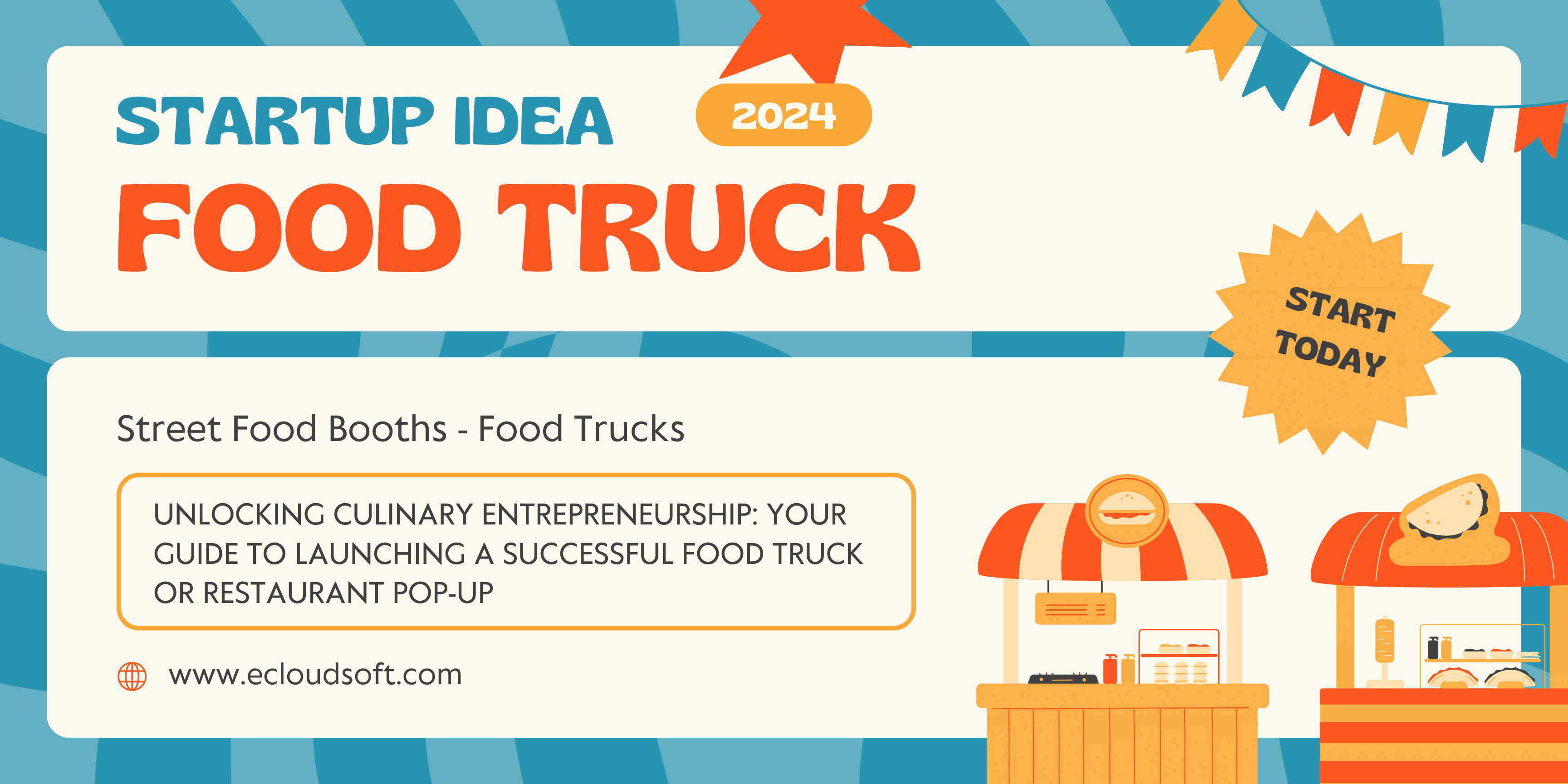
In the vibrant world of culinary entrepreneurship, launching a food truck or restaurant pop-up has emerged as a popular and viable startup idea. This guide to culinary entrepreneurship: starting your food truck or pop-up offers a dynamic platform for aspiring chefs and business owners to showcase their culinary talents without the hefty investment and operational complexities of a traditional brick-and-mortar restaurant. Whether you’re passionate about gourmet tacos, innovative vegan dishes, or unique fusion cuisines, starting a mobile or temporary dining experience can be your gateway to success. This guide will walk you through the essential steps and creative strategies to transform your food passion into a profitable business.
Why Choose a Food Truck or Restaurant Pop-Up?
Lower Initial Investment
Compared to opening a full-scale restaurant, food trucks and pop-ups require significantly lower startup costs. You can begin with a modest menu and scale up as your business grows, minimizing financial risk while testing market demand.
Flexibility and Mobility
Food trucks offer the unique advantage of mobility, allowing you to relocate based on demand, events, or seasonal trends. Pop-ups, on the other hand, can create buzz by appearing in strategic locations for limited times, fostering a sense of exclusivity and urgency among customers.
Market Testing and Brand Building
Both models provide an excellent opportunity to test new menu items and gather customer feedback before committing to a permanent location or expanding your offerings. This flexibility aids in refining your brand and ensuring it resonates with your target audience.
Innovate Beyond the Ordinary: Stand Out in the Crowd
Unique Menu Offerings
While many food trucks specialize in popular items like burgers or tacos, differentiating your business with a unique menu can set you apart. Consider niche markets such as:
- Healthy Instant Foods: Offer nutritious, quick-serve meals using a healthy instant food-making machine. This caters to health-conscious consumers seeking convenience without compromising on quality.
- Specialty Cuisine: Focus on a specific cuisine or fusion dishes that aren’t widely available in your area.
Alternative Business Models
Beyond traditional food trucks and pop-ups, explore innovative models to maximize reach and efficiency:
- Vending Machines: Install smart vending machines in industrial areas or business districts offering fresh, healthy meals. Ensure the machines dispense quality products quickly, catering to busy professionals who need fast meal options.
- Collaborative Pop-Ups: Partner with local businesses, such as coffee shops or breweries, to host your pop-up. This synergy can attract a broader customer base and reduce overhead costs.
Key Considerations for Success
Choosing the right location is crucial for attracting customers. Research high-traffic areas like business districts, university campuses, event venues, and popular neighborhoods. Consider the following:
- Permits and Regulations: Ensure you comply with local health and safety regulations, obtain necessary permits, and understand zoning laws.
- Accessibility: Select locations that are easily accessible and have adequate parking or foot traffic.
Streamlined Operations
Efficiency is key to customer satisfaction, especially when offering quick-service options. Implement strategies to minimize wait times:
- Simplified Menu: Offer a concise menu with items that can be prepared quickly without compromising quality.
- Technology Integration: Utilize mobile ordering, contactless payments, and real-time inventory management to streamline operations.
Marketing and Branding
Building a strong brand presence is essential for attracting and retaining customers. Leverage digital marketing and social media to promote your business:
- Social Media Engagement: Share enticing photos of your dishes, announce your location, and engage with your audience through platforms like Instagram, Facebook, and Twitter.
- Local Partnerships: Collaborate with local influencers, food bloggers, and community events to increase visibility.
- Loyalty Programs: Implement loyalty programs or special promotions to encourage repeat business.
Revenue Potential: Turning Passion into Profit
The revenue potential for food trucks and pop-ups is substantial, especially when you tap into the right market and maintain operational efficiency. Here are some revenue streams to consider:
- Direct Sales: The primary income comes from the sale of food and beverages. Pricing should reflect your costs, desired profit margins, and local market rates.
- Catering and Private Events: Offer catering services for corporate events, weddings, and parties to diversify your income.
- Merchandise Sales: Sell branded merchandise such as T-shirts, mugs, or reusable containers to enhance brand loyalty and generate additional revenue.
- Online Presence: Develop a strong online presence with a user-friendly website and an e-commerce platform to sell pre-packaged meals, sauces, or other products.
Conclusion: Your Culinary Journey Starts Now
Opening a food truck or restaurant pop-up is a thrilling venture that combines creativity, passion, and business acumen. Culinary Entrepreneurship: A Guide to Starting Your Food Truck or Pop-Up involves By offering unique and quality products, strategically selecting your locations, and implementing efficient operations, you can create a thriving business that delights customers and generates substantial revenue. Embrace innovation, stay adaptable, and continuously engage with your audience to build a brand that stands out in the bustling culinary landscape. Your journey to culinary entrepreneurship starts with a single step—take it today and savor the rewards of your hard work and creativity.
Ready to Launch?
If you’re inspired to start your own food truck or pop-up restaurant, don’t hesitate to reach out for personalized advice and resources.